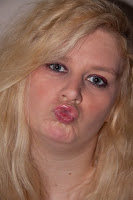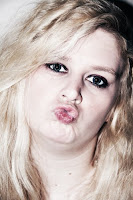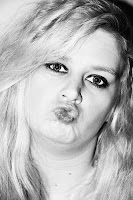After seeing the picture from The Photo Forum, I decided to try desaturated colour myself.
I opened my chosen picture, got rid of any blemishes using the clone stamp / healing tool, softened skin using surface blur (tutorial on this later), and corrected the white balance. Seeing as multiple layers were used, I flattened the image before doing anything else.
I upped the brightness and contrast to start with seeing as my picture was rather dark. I then clicked:
Image > Adjustments > Hue and Saturation
Moving the Saturation slider all the way to the right makes the colours very very vibrant. If a bright colourful picture is what you want, move the slider to around +25.
However, I wanted desaturated colour so I moved the slider to the left. All the way left makes the picture go black and white, so I stopped around the -75 mark to give just a hint of colour. I then used the brightness and contrast tool again and got the final image.
Below is the original image, a desaturated image and a pure black and white image.















